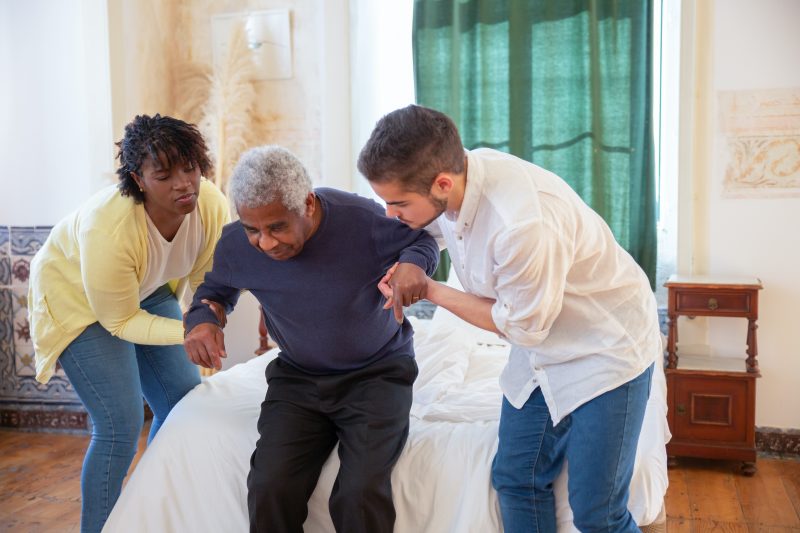Moving and handling is a large aspect of the working day for many carers working in healthcare. Poor handling and moving techniques can cause long lasting injuries to carers, sometimes leading to the inability to work.
What to know about moving and handling
Bad moving and handling practices can cause:
- Muscle or joint pain – can be caused by incorrect handling techniques. It is estimated that healthcare workers suffering from work-related musculoskeletal disorders account for more than a third of all working days lost due to sick leave.
- Falls and trips – can occur when walking or moving patients without assistance, or if equipment is not properly positioned.
- Backs, shoulders and necks – are particularly vulnerable to injury if handling techniques are not correct. Poor posture when handling patients can also lead to long-term problems.
To avoid these risks, it is important to be aware of the correct moving and handling techniques. These can be learned through training courses, which are often mandatory for healthcare workers. When lifting or moving patients, always use appropriate equipment and get help from another person if necessary.
What you should do
When moving and handling patients, you must recognise the risks associated in order to manage them successfully. Here are some key points to remember:
Assess the risks –
Before moving or handling a patient, think about the safest way to do it. Consider the patient’s size, weight and condition, as well as any equipment that might be needed.
Get help if necessary –
Don’t try to move a patient on your own if you don’t have the right equipment or if the patient is too heavy.
Use mechanical aids –
There is a wide range of mechanical aids available to help with moving and handling patients. These include hoists, slings, lift sheets and transfer boards.
Follow the correct procedures –
When using mechanical aids, make sure you follow the manufacturer’s instructions.
Use good handling techniques –
When lifting or moving a patient, use your legs to bear the weight, keep your back straight and avoid twisting.
Policy for moving and handling
A policy for moving and handling patients within your organisation, should outline safe practices and recognition of risks. A policy for moving and handling should include:
- Recognition of all risks
- Precautions to reduce risk
- Use of mechanical aids
- Good handling technique
- Reporting of incidents
- Clear roles and responsibilities
- What is expected from employees
- What support is available to individuals who are injured at work
This policy should be reviewed on a regular basis, in line with any changes in legislation or best practice. There are a number of pieces of legislation that relate to moving and handling in healthcare, including the Manual Handling Operations Regulations 1992 and the Health and Safety at Work.
What to use to assist with moving and handling
Specifically designed moving and handling aids can make the process safer and easier. These include:
Lift sheets
A lift sheet is a piece of fabric with handles that can be used to help lift a patient from a bed or chair.
Slings
A sling helps to support a patient’s body weight when being lifted. There are different types of slings available, depending on the needs of the patient.
Hoists
A hoist is a mechanical device that can be used to lift and move patients. Hoists can be floor-mounted or ceiling-mounted, and there are different types available depending on the needs of the patient.
Transfer boards
A transfer board is a flat piece of equipment that can be used to help move a patient from one surface to another, such as from a bed to a wheelchair.
When using any of these aids, it is important to follow the manufacturer’s instructions and to be aware of the risks involved.
Satin Slide Sheets
Satin slide sheets are made from a slippery material that can be used to help move a patient up in bed, or from one surface to another. They can be used on their own or in conjunction with other moving and handling aids.
Using correct moving techniques
Moving and handling patients can be a risky task for healthcare workers if the correct techniques are not used. By following some simple tips, you can help to reduce the risks:
- Keep your back straight and avoid twisting
- Use your legs to bear the weight
- Get help from another person if necessary
- Use appropriate moving and handling aids
- Follow the manufacturer’s instructions
Moving and handling patients can be a difficult and challenging task. However, by following some simple tips and using the correct equipment, you can help to make the process safer and easier.
